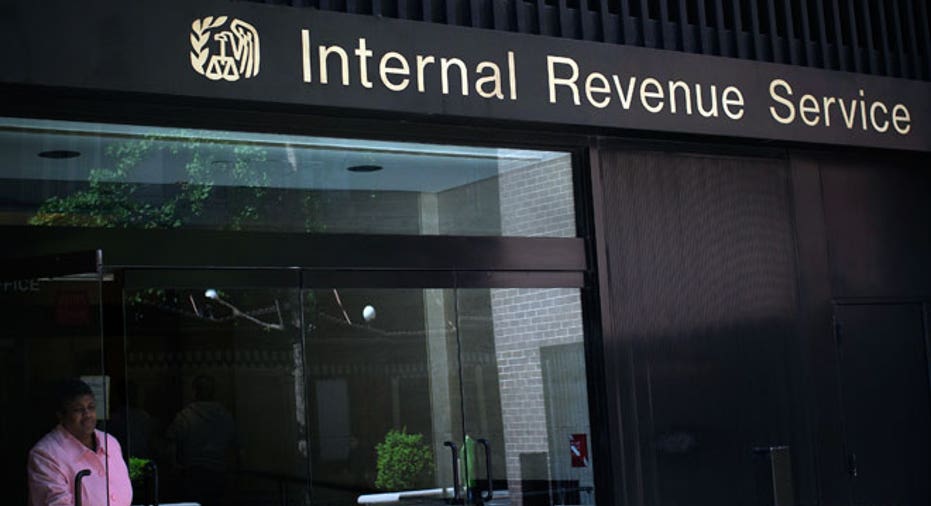Grading the IRS in 2013

The IRS’ performance for 2013 got mixed reviews from the Treasury Inspector General for Tax Administration (TIGTA).
TIGTA, which is tasked with providing independent oversight of IRS activities, released its annual report card of the agency’s performance during the 2013 filing season.
The year started out with a delay because the IRS had to make changes to several tax forms (and create new ones) to implement provisions of the American Taxpayer Relief Act, which became law on Jan. 2. It was a heavy chore and some forms were not made available until February.
“Despite the delays, the IRS timely processed the majority of tax returns, and tax refunds were issued within 45 days of the April 15 tax return due date,” said J. Russell George, Treasury Inspector General for Tax Administration in a release.
TIGTA found that “as of May 4, 2013, the IRS received approximately 133.6 million tax returns, down from 134.6 million returns filed during the same period in 2012.” One million fewer filers this year has many people wondering if the drop signifies another economic downturn or if it means the widening of the tax gap through noncompliance or just fewer people with filing requirements.
Refunds were down as well. According to TIGTA, “The average refund decreased slightly to $2,656 in 2013, compared with $2,708 during the same period last year.”
The IRS reported that it identified 579,183 tax returns with $3.6 billion claimed in fraudulent refunds during tax return processing and prevented the issuance of $3.47 billion (96%) of those refunds. “The IRS is continuing to expand its efforts to identify and prevent fraudulent tax returns from being processed,” George noted in the report.
Taxpayers are increasingly using the automatic direct deposit for their tax refunds, but they are still a small percentage compared to the number of tax returns that are filed every year. Direct deposits totaling more than $150.8 million were made to 46,897 bank accounts. Using direct deposit is more secure and expedites the process, meaning your tax refund will arrive sooner than if you were waiting for it to arrive via snail mail.
It’s also possible to direct the refund to more than one account. You may put part of it into a checking account and specify the remainder to go into your savings or retirement account. Simply file IRS Form 8888 to allocate the refund.
IRS.gov has improved significantly over the years and many people use the site’s self-service features. According to TIGTA, “The IRS offered a number of different options for taxpayers to seek information and assistance, and more taxpayers are using self-assistance customer service options.” According to the IRS, the site experienced a 25% increase in visitors as of May 4, with the “Where’s My Refund” feature getting a 56% boost in traffic. With that said, the “Where’s My Refund” tool did not always provide accurate refund status information early in the filing season.”
Phoning the IRS is a different story. Hold times continue to run frustratingly long. Although the IRS states its employees answered one million more calls this year than last year at 15.6 million through May 4.
One area of compliance that is still of great concern are questionable tax credits issued to taxpayers. TIGTA identified “42,961 questionable education credits totaling $58.5 million and $2.6 million in questionable Plug-in Electronic Drive Motor Vehicle Credits issued by the IRS as of May 2.”
TIGTA made eight recommendations to the IRS, including, improving the identification of questionable claims for education credits and Plug-In Electric Motor Vehicle credits. In addition, TIGTA recommended that the IRS initiate programs to recover the erroneous and questionable credits TIGTA identified and to ensure that EITC due diligence requirements are assessed when appropriate.
The IRS agreed with seven of TIGTA’s recommendations and partially agreed with the other.
The TIGTA also released news Thursday that the IRS works with close to 1,2000 vendors that collectively owe $589 million in back taxes, including one unnamed contractor that owed $525 million.
“The vast majority of vendors that conduct business with the IRS meet their Federal tax obligations. However, TIGTA found that 1,168 (7 percent) IRS vendors had a combined $589 million of Federal tax debt, of which $587 million associated with 1,118 vendors was not part of a current payment plan as of July 2, 2012,” the TIGTA said in a statement.
Perhaps the agency needs to consider applying backup withholding to vendor payments of those in default. This action alone would put a nice dent in the tax gap.



















